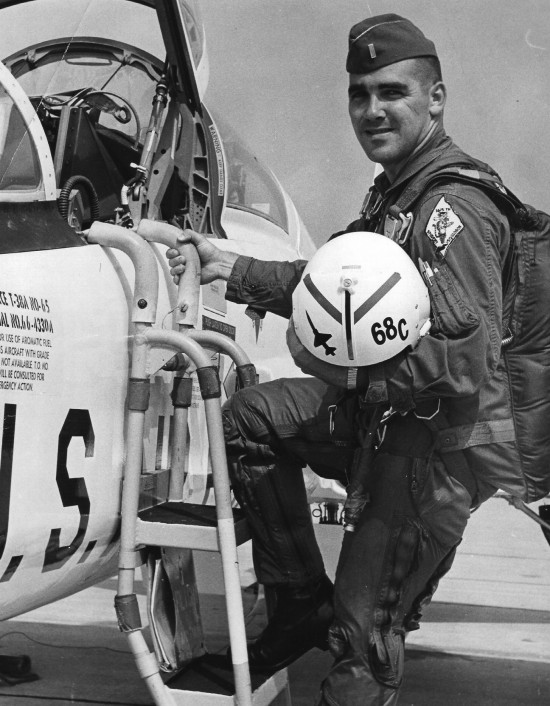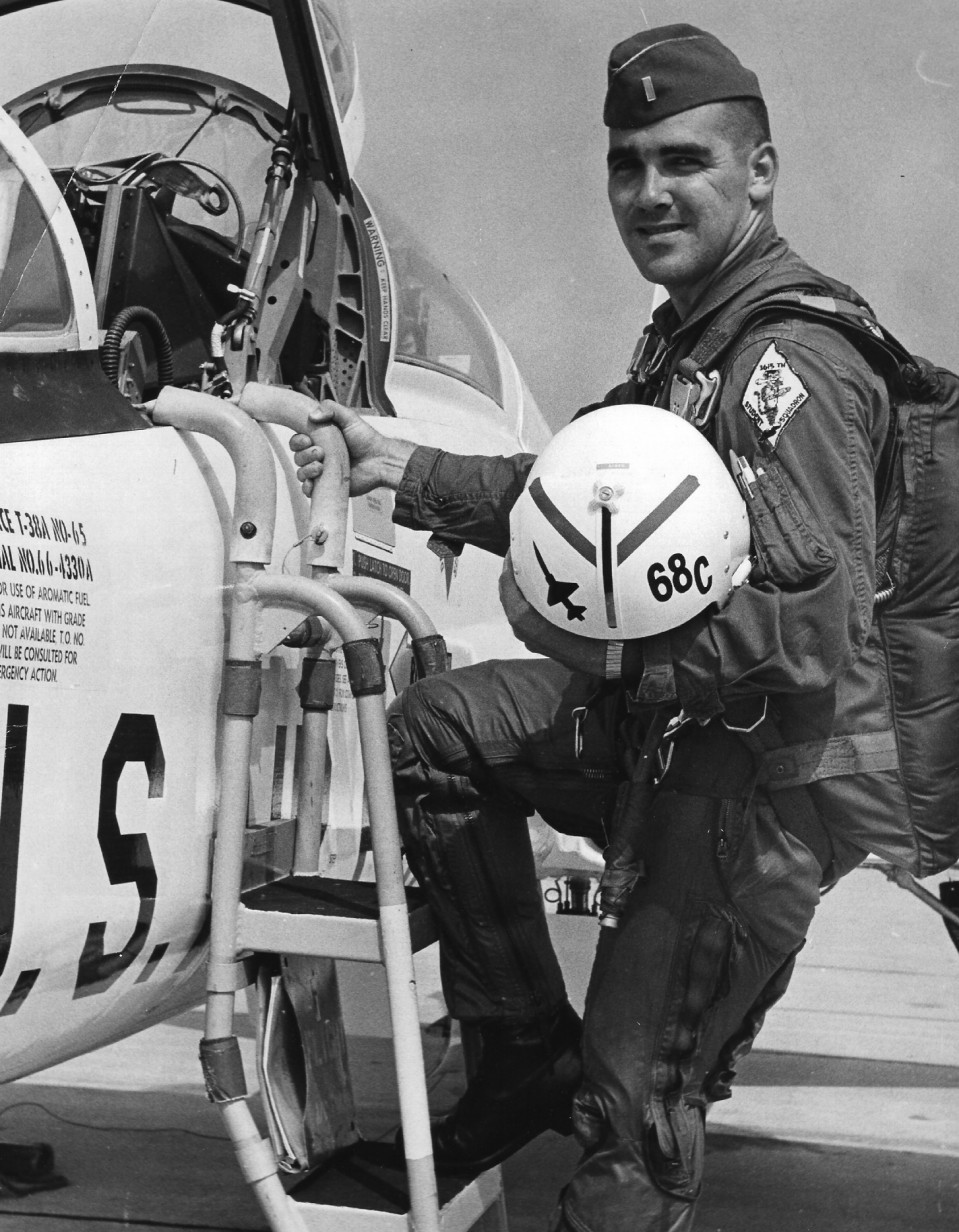A Long Journey Home
Fallen Vietnam War aviator finally to be laid to rest.



David T. Dinan III ’65, a reserve first lieutenant in the US Air Force, was killed in action during the Vietnam War on March 17, 1969, after ejecting from his F-105D aircraft during a strike mission over northern Laos. But because of the area’s hazardous location—and enemy fire in the aftermath of the crash—his body remained at the crash site for nearly 50 years.
Thanks to the relentless efforts of a group of Dinan’s family and friends, with the help of a small contingent from MIT, his remains were at last recovered in 2016, and he will be interred at Arlington National Cemetery this spring.
“We thought a search for David deserved more attention,” says Charles Dinan, his brother. “But I don’t think we were expecting to find anything. The end result, including the response from MIT, was almost unbelievable.”
The Institute’s involvement in David’s recovery indirectly began nearly 10 years ago, when David Sabo ’61, SM ’63, his Phi Kappa Theta fraternity brother, noticed that David’s name was missing from the Institute’s Memorial Lobby (formerly Lobby 10). There the names of MIT alumni who gave their lives in World War I, World War II, the Korean War, and the Vietnam War are engraved on the stone walls. Sabo alerted MIT about the omission, and David’s name was added in 2009. While considered an alumnus, David did not graduate from MIT; he transferred to Stevens Institute of Technology before joining the Air Force in 1966.
“Adding David’s name so quickly was thoughtful and appreciated,” Charles says. “Especially since our father, Charles ’27, graduated from MIT and spoke so highly of the Institute.”
Serendipitously, after reading about David’s acknowledgment, Mark Rockoff ’69 contacted MIT because his son-in-law’s father, Edward L. Sykes, a retired colonel, was David’s Air Force roommate and had been searching for a way to connect with David’s family for years.
“Unknown to the Dinans, Ed had never forgotten about David and had been working to recover him,” says Rockoff. “But he didn’t have a way to contact the family.”
Sykes had been working with the Defense POW/MIA Accounting Agency, a Department of Defense office that recovers military personnel listed as prisoners of war or missing in action.
MIT administrator Frances Marrone connected Sykes and Rockoff with Charles and his brother John at a 2010 ROTC meeting. Sykes and Charles Dinan stayed in touch, attending POW/MIA conventions and contacting US congressional representatives to lobby for the recovery of David’s body. And Sykes made three personal trips to Laos from 2012 to 2014 to learn more about the remote area where he believed David’s body to be located.
In March 2014, the military’s Joint POW/MIA Accounting Command (JPAC) conducted a three-day investigation in Laos near the crash site, accompanied by Leland Sorensen, the original pararescue jumper who found, but could not recover, David’s body in 1969. Given a short period to search by the Laos government, Sorensen found David’s faded military ID card and other personal effects in the investigation’s waning moments.
“Before that, we really thought it might be hopeless,” Charles says. “They weren’t able to do a full excavation, but finding that card proved we were close.”
JPAC returned in 2016, and investigators were able to excavate human biological material near the area where the military ID was found. DNA testing confirmed that the material belonged to David Dinan. After 48 years, he had been recovered.
“Hearing the news was astounding,” says Charles.
David Dinan was honored at the Institute’s 2017 Veterans Day ceremony in Memorial Lobby. In addition, a rosette was placed next to his name on the Walls of the Missing at the American Battle Monuments Commission in Honolulu, indicating that he had finally been found.
“David’s story is one of service and loyalty,” says Lieutenant Colonel Sheryl “Double” Ott ’96, MEng ’96, MIT’s Air Force ROTC commander. “Both his dedication to his country, and the dedication of his friends and family to his recovery.”
David was a recipient of the Purple Heart, Air Medal, Air Force Commendation Medal, and three Distinguished Flying Crosses, among other decorations. Ott will represent the Institute at the ceremony when he is interred on April 25, 2018.
“MIT’s role in the recovery is a testament to the moral compass of the Institute,” Ott says. “It’s a tremendous example for our cadets and dovetails with MIT’s commitment to create a better world for everyone.”